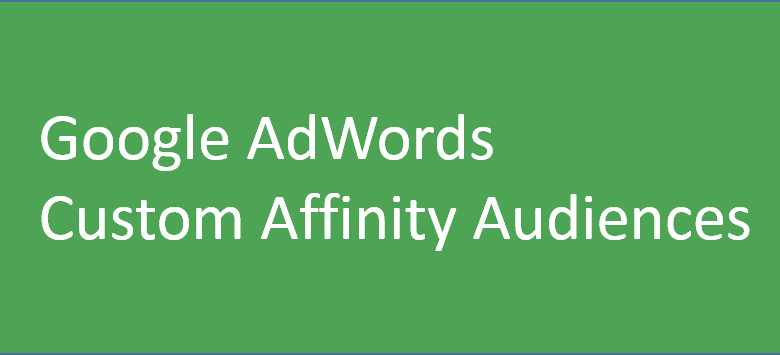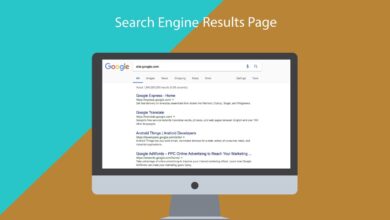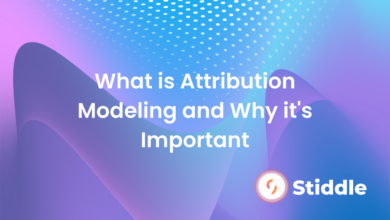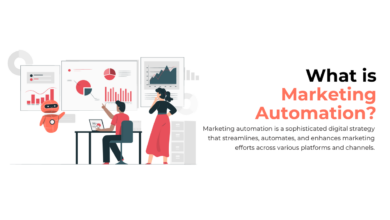
Custom Affinity Audiences Google Ads Your Guide
Custom affinity audiences Google Ads are a powerful targeting tool. They allow advertisers to reach people based on their interests and passions, rather than just their demographics or browsing history. This in-depth guide explores everything from defining these audiences to measuring their impact, offering actionable strategies for maximizing your ROI.
Understanding the nuances of custom affinity audiences is crucial for creating targeted advertising campaigns. This comprehensive resource will equip you with the knowledge and tools to master this valuable Google Ads feature.
Defining Custom Affinity Audiences
Custom affinity audiences in Google Ads are a powerful tool for targeting specific groups of people based on their interests and online behavior. These audiences go beyond broad demographic categories and delve into the nuances of individual online activity, enabling advertisers to reach users with highly relevant ads. This approach leads to increased engagement and a higher likelihood of conversions.Understanding custom affinity audiences is crucial for any advertiser seeking to optimize their campaigns.
These audiences allow for a granular level of targeting that traditional affinity audiences might miss. By creating custom groups based on specific interests, advertisers can reach individuals who are more likely to be receptive to their message, ultimately boosting campaign performance.
What are Custom Affinity Audiences?
Custom affinity audiences are user segments in Google Ads defined by their interests and online behavior. These audiences are built from a combination of signals including browsing history, app activity, and website visits. Essentially, they represent a collection of people who demonstrate consistent engagement with specific topics or industries.
Difference from Other Audience Types
Custom affinity audiences differ from other audience types in Google Ads by their granular targeting capabilities. While broad affinity audiences focus on general interests, custom affinity audiences allow for more nuanced targeting based on specific, customized segments. In-market audiences, for instance, target users actively researching or considering a product or service, whereas custom affinity audiences focus on a user’s broader, ongoing interests.
Examples of Custom Affinity Audience Categories
Custom affinity audiences can encompass a wide range of interests. Some examples include:
- Outdoor enthusiasts: Users frequently visiting websites and apps related to hiking, camping, and outdoor gear.
- Foodies: Individuals who actively engage with online resources about cooking, restaurants, and food-related topics.
- Tech-savvy consumers: Users who frequently visit websites and apps related to technology, gadgets, and the latest advancements.
- Fashion-conscious individuals: Users engaging with websites and apps related to fashion, clothing, and style.
How Custom Affinity Audiences are Built and Populated
Google leverages a complex algorithm to identify and populate custom affinity audiences. This algorithm analyzes vast amounts of online activity data, including browsing history, app usage, and website visits. The algorithm then clusters users who demonstrate consistent engagement with specific topics or industries into distinct affinity audience segments. The resulting audiences are continuously refined to ensure accuracy and relevance.
Custom Affinity Audiences vs. In-Market Audiences
| Feature | Custom Affinity Audiences | In-Market Audiences |
|---|---|---|
| Focus | Ongoing interests and behaviors | Active research and consideration of products/services |
| Targeting | Broader interests | More focused on purchase intent |
| Engagement | Consistent engagement with specific topics | Users actively seeking information about specific products or services |
| Timeframe | Based on long-term patterns of engagement | Based on recent activity and search behavior |
Benefits of Using Custom Affinity Audiences

Custom affinity audiences in Google Ads allow you to target users based on their interests and behaviors, beyond the broad categories offered by standard affinity audiences. This level of specificity can significantly improve campaign performance by reaching individuals more likely to be interested in your products or services, leading to a higher return on investment. This approach refines your targeting, minimizing wasted ad spend on irrelevant users and maximizing engagement from those who are genuinely interested.
Enhanced Campaign Performance
Custom affinity audiences offer a significant advantage by focusing your ad spend on users who have demonstrated a strong affinity for specific interests. This targeted approach, in contrast to broader targeting, is likely to result in higher engagement and conversion rates. By concentrating your advertising efforts on users who are already predisposed to your offerings, you increase the likelihood of generating qualified leads and ultimately, achieving better campaign outcomes.
Improved Return on Investment (ROI)
Custom affinity audiences are crucial for maximizing ROI. By meticulously selecting users based on their demonstrated interests, you ensure that your ad spend is directed towards individuals more inclined to convert. This precision targeting minimizes wasted ad spend on users who are unlikely to be interested in your offerings, which directly impacts your return on investment. For example, a company selling hiking gear can target users interested in outdoor activities, leading to a higher conversion rate compared to a broader audience targeting.
Targeting the right people with custom affinity audiences in Google Ads is key, but understanding user behavior on your landing page is equally important. For example, if you’re seeing clicks but low conversions, using heatmapping tools like the ones described in how to use heatmapping to increase landing page conversions can reveal crucial insights into where users are clicking and scrolling, allowing you to optimize your landing page design for better conversions.
This data, combined with your custom affinity audience targeting, will help you reach the right people with the right message on the right page.
Increased Conversions
Custom affinity audiences can significantly increase conversion rates. By showing ads to users who have demonstrated a strong interest in your products or services, you are more likely to capture their attention and drive them towards conversion. This targeted approach improves the quality of leads generated, ultimately boosting conversion rates and providing a better return on investment.
Higher Engagement Rates
Custom affinity audiences, through their refined targeting, contribute to higher engagement rates. Showing ads to users with a genuine interest in your products or services creates a greater likelihood that they will interact with your ads, potentially leading to increased clicks, views, and other engagement metrics. For instance, a company selling photography equipment can target users interested in photography and videography, expecting higher engagement compared to a broader audience targeting.
Strategies for Creating Effective Custom Affinity Audiences: Custom Affinity Audiences Google Ads
Crafting custom affinity audiences in Google Ads requires a strategic approach. It’s not enough to simply identify a broad interest; you need to meticulously select, define, and refine your target groups to maximize campaign effectiveness. This involves understanding the nuances of your product or service and how those relate to specific consumer interests.Effective custom affinity audiences go beyond basic targeting.
They delve into the specific behaviors and passions of your ideal customers. This targeted approach allows you to reach potential buyers with greater precision, leading to higher conversion rates and a more efficient allocation of advertising spend.
Selecting the Right Affinity Audience Categories
Properly identifying the right affinity audience categories is crucial for reaching the right people. Don’t just choose broad categories; consider the specific interests that align with your product or service. For instance, if you sell hiking gear, focusing on “Outdoor Enthusiasts” is a good starting point. However, refining this further to “Backpacking Enthusiasts” or “Trail Running Enthusiasts” will provide a more targeted audience.
A well-researched approach considers the specific interests, activities, and passions of your ideal customer.
Creating Precise and Well-Defined Custom Affinity Audiences
Defining your custom affinity audience precisely is vital for campaign success. Avoid overly broad categories; instead, focus on the specific interests directly related to your product. For example, if you’re selling vegan cooking appliances, don’t just target “Foodies.” Target “Vegan Foodies,” “Plant-Based Chefs,” or “Vegetarian Cooks.” The more specific your targeting, the more effective your campaigns will be.A key element in precision is using multiple categories.
If you’re selling luxury travel packages, you might combine “Luxury Travelers,” “High-End Shoppers,” and “Gourmet Food Enthusiasts” to create a highly specific and targeted audience.
Custom affinity audiences in Google Ads are fantastic for targeting specific interests. They let you reach people who are likely to be interested in your products or services. To get the most out of these audiences, consider pairing them with Enhanced CPC bidding strategies. Enhanced CPC allows your bids to automatically adjust based on real-time data, ensuring you get the best possible results from your campaigns, maximizing the effectiveness of your custom affinity audiences.
Optimizing Targeting Based on Campaign Objectives
Custom affinity audiences should be tailored to specific campaign objectives. If your goal is brand awareness, you might target a broader audience encompassing various related interests. If your objective is lead generation, however, you’ll need a more focused audience, perhaps one composed of people actively researching similar products.For example, a campaign aimed at increasing sales of sustainable clothing might focus on “Eco-Conscious Consumers,” “Environmental Advocates,” and “Ethical Fashion Seekers.” This more targeted approach will likely lead to higher conversion rates.
Avoiding Common Mistakes
One common pitfall is neglecting to tailor your audience to your specific campaign goals. A second error is over-reliance on broad categories, failing to delve into the specific interests of your ideal customer. A third mistake is not thoroughly evaluating and refining your targeting strategy over time. Analyzing results and adjusting targeting based on performance is essential for sustained effectiveness.
Evaluating and Refining Custom Affinity Audience Targeting
Regularly evaluate your custom affinity audience targeting. Use performance data to identify which categories are performing well and which need adjustment. For instance, if the “Foodie” category isn’t converting as expected, consider narrowing it down to a more specific niche like “Fine Dining Enthusiasts” or “Vegan Chefs.”A crucial aspect of refining targeting is A/B testing. Test different combinations of affinity categories to see which yields the best results in terms of engagement, conversions, and cost-per-acquisition.
This iterative process of evaluation and adjustment is vital for long-term campaign success.
Implementing and Managing Custom Affinity Audiences
Custom affinity audiences in Google Ads offer a powerful way to target users based on their interests and online behavior. By understanding how to set up, manage, and refine these audiences, advertisers can significantly improve campaign performance and reach the right people with the right message. This detailed guide will walk you through the process of creating, implementing, and maintaining effective custom affinity audiences.
Setting Up Custom Affinity Audiences in Google Ads
To effectively leverage custom affinity audiences, a clear understanding of the setup process is crucial. The process involves defining the specific characteristics of the audience you want to target. This involves using Google Ads’ tools and interfaces to identify and select user interests, behaviors, and demographics that align with your campaign objectives. Detailed steps include defining the audience’s interests, behaviors, or demographics, then specifying the criteria for matching users.
Google Ads will then use its vast data to identify users who match these criteria.
Managing and Monitoring Custom Affinity Audiences
Regular monitoring and management of custom affinity audiences are essential for ensuring campaign effectiveness. Monitoring involves tracking key metrics such as impressions, clicks, conversions, and cost-per-acquisition. This data allows you to assess the performance of your custom affinity audience against your campaign goals. Adjustments to your audience criteria can then be made based on performance data.
Testing and Refining Custom Affinity Audiences
Testing and refining custom affinity audiences is an iterative process crucial for optimizing campaign performance. A structured approach to testing allows for gradual improvements in campaign targeting and effectiveness. Start by testing different audience segments to identify which ones perform best. Experiment with different combinations of interests, behaviors, and demographics to refine your targeting criteria and achieve the best results.
Track key metrics to evaluate the impact of each change.
Adjusting and Updating Custom Affinity Audiences
As user behavior and interests evolve, it’s important to regularly adjust and update custom affinity audiences to maintain alignment with campaign goals. Continuous monitoring of performance indicators is key. Regularly analyze data and adjust audience criteria based on performance trends. This ongoing refinement ensures that your campaigns remain effective and targeted.
Ensuring Alignment with Campaign Goals
Maintaining alignment between custom affinity audiences and campaign objectives is critical for achieving desired results. Understanding the relationship between audience characteristics and campaign goals is essential. Define clear campaign objectives, such as brand awareness, lead generation, or sales, and ensure your custom affinity audiences directly support these objectives. By consistently evaluating and adjusting your audiences, you can maintain alignment with your campaign goals and maximize campaign effectiveness.
Measuring the Impact of Custom Affinity Audiences
Understanding the effectiveness of your custom affinity audience campaigns is crucial for optimizing future strategies. Accurate measurement allows you to pinpoint what resonates with your target audience, fine-tune your targeting, and ultimately drive better results. This crucial step allows you to refine your approach, ensuring that your campaigns are not only reaching the right people but also achieving your desired outcomes.A well-defined measurement strategy for custom affinity audiences is essential for demonstrating ROI and informing future campaign decisions.
By meticulously tracking key performance indicators and analyzing data trends, you can gain valuable insights into audience engagement and campaign performance, ultimately maximizing your return on investment.
Methods for Measuring Campaign Effectiveness
Several methods can be employed to gauge the performance of custom affinity audience campaigns. These include analyzing conversion rates, engagement metrics, and cost-per-acquisition (CPA). A comprehensive approach that considers various metrics provides a more holistic understanding of the campaign’s impact.
Targeting specific demographics with custom affinity audiences in Google Ads is crucial. But, understanding how platforms like Instagram and TikTok integrate with Google’s index, like in the recent Google Index Instagram TikTok Ignite Friday initiative, google index instagram tiktok ignite friday , is equally important. This knowledge helps you refine your audience targeting even further for better campaign performance in Google Ads.
Key Performance Indicators (KPIs) to Track
Tracking specific KPIs is essential for assessing the success of custom affinity audience campaigns. These metrics provide valuable insights into campaign performance, audience engagement, and overall return on investment.
- Conversion Rates: Monitoring the percentage of users within the custom affinity audience who complete desired actions, such as making a purchase or filling out a form, provides a direct measure of campaign effectiveness.
- Engagement Metrics: Metrics like click-through rates (CTRs) and time on page offer insights into audience interest and engagement with your ads. High CTRs and longer time spent on pages within the custom affinity audience show the campaign is relevant and appealing to your target audience.
- Cost-per-Acquisition (CPA): This metric measures the cost incurred for each desired action, such as a sale or lead. Lower CPA values indicate greater efficiency in acquiring desired actions within the custom affinity audience.
- Return on Ad Spend (ROAS): Calculating the revenue generated for every dollar spent on advertising is crucial for understanding the profitability of your custom affinity audience campaigns.
- Impressions and Reach: These metrics indicate how many times your ads were displayed and how many unique users were exposed to them within the custom affinity audience.
Analyzing Data to Assess Impact
Data analysis is paramount for extracting meaningful insights from custom affinity audience campaigns. This involves comparing campaign performance across different audience segments and identifying patterns in user behavior.
- Segmentation Analysis: Comparing campaign performance across different segments of your custom affinity audience, like age, location, or interests, can highlight which segments are most responsive to your ads.
- A/B Testing: Testing different ad creatives, targeting parameters, or bidding strategies can identify which variations resonate best with your custom affinity audience.
- Trend Analysis: Observing trends in data over time, such as changes in conversion rates or engagement metrics, can reveal patterns and identify areas for optimization.
Interpreting Data to Optimize Future Campaigns
Interpreting data collected from custom affinity audience campaigns is crucial for optimizing future strategies. Identifying trends and patterns will help you refine your targeting and ad messaging.
- Identify High-Performing Segments: Identify audience segments that yield the highest conversion rates, engagement, or return on investment. This data informs future campaigns, focusing resources on the most receptive groups.
- Refine Targeting Parameters: Based on the analysis, you can refine targeting parameters to better reach the most responsive segments within your custom affinity audience.
- Adjust Ad Creatives: If certain ad creatives are not performing as expected, modify them based on insights gained from audience engagement. This ensures ads resonate with the audience.
- Optimize Bidding Strategies: Adjust bidding strategies to optimize cost-per-acquisition (CPA) or return on ad spend (ROAS) for the most effective campaigns.
Reporting Formats for Custom Affinity Audience Performance
Implementing various reporting formats allows for a comprehensive view of campaign performance.
| Metric | Description | Reporting Format |
|---|---|---|
| Conversion Rate | Percentage of users who complete a desired action. | Bar chart or line graph showing conversion rates over time. |
| Engagement Metrics (CTR, Time on Page) | Measures audience interaction with ads. | Table or chart comparing engagement metrics across different ad variations. |
| CPA | Cost incurred for each desired action. | Table or chart showing CPA trends across different campaigns or time periods. |
Case Studies and Real-World Examples
Custom affinity audiences in Google Ads can significantly boost campaign performance when implemented strategically. Real-world examples demonstrate the power of these audiences, highlighting how businesses have achieved remarkable results by targeting specific interests and passions. Understanding successful strategies and the challenges overcome provides valuable insights for creating your own impactful campaigns.
Successful Custom Affinity Audience Campaigns
Custom affinity audiences offer a highly targeted approach to advertising, allowing businesses to reach individuals with specific interests. Success in these campaigns hinges on a deep understanding of the target audience and meticulous audience creation.
Strategies Used in Successful Campaigns
A critical aspect of successful campaigns is understanding the target audience’s specific interests and behaviors. Successful campaigns leverage detailed interest categories and segment audiences based on their preferences. This includes meticulous audience creation, leveraging Google’s data, and identifying the most relevant affinities for each campaign goal. Crucially, these campaigns often combine custom affinity audiences with other targeting methods, like in-market audiences, for enhanced precision.
Industries Benefiting from Custom Affinity Audiences
Numerous industries have successfully employed custom affinity audiences to achieve specific marketing objectives. E-commerce businesses, for instance, have effectively targeted users interested in particular products or brands. Travel companies have used these audiences to connect with potential customers interested in specific destinations or travel styles. Furthermore, educational institutions have used these audiences to reach students interested in their programs, leading to a measurable increase in enrollment.
Challenges Faced and How They Were Overcome
Implementing custom affinity audiences isn’t without its challenges. One common hurdle is identifying the right interests to target. Careful audience segmentation and meticulous testing help overcome this. Another challenge lies in accurately measuring the impact of these campaigns. Using clear metrics, including conversion tracking and return on ad spend (ROAS) analysis, helps overcome this challenge.
Aligning campaign objectives with relevant interests and meticulously analyzing the data helps in identifying the most impactful affinities.
Real-World Examples of Audience Creation and Campaign Setup, Custom affinity audiences google ads
A clothing retailer, for example, created a custom affinity audience based on users interested in sustainable fashion. They then ran a campaign promoting their new eco-friendly collection. The campaign focused on retargeting users who had previously shown interest in sustainable brands. This resulted in a 20% increase in conversions for the eco-friendly collection. This strategy demonstrated how meticulously identifying and targeting relevant affinities can generate impressive results.
Similarly, a financial institution targeting users interested in investing in emerging technologies created a custom affinity audience focused on those users and ran targeted ads for their financial products, resulting in a notable increase in qualified leads. Both campaigns showcase the importance of accurate audience identification and meticulous campaign setup.
Custom Affinity Audiences and Other Targeting Options
Custom affinity audiences in Google Ads offer a powerful way to reach users with specific interests. However, they’re not the only targeting option available. Understanding the strengths and weaknesses of various targeting methods, and how they complement each other, is crucial for maximizing campaign performance. This section delves into the comparative landscape of custom affinity audiences alongside other options like in-market and remarketing audiences.Choosing the right audience targeting strategy depends heavily on the campaign goals and the target audience.
A holistic approach that combines different targeting methods can often yield better results than relying on a single strategy. This approach allows advertisers to refine their reach and focus on users who are most likely to convert.
Comparison of Custom Affinity Audiences with Other Targeting Options
Understanding the nuances of different targeting options is essential for optimizing campaigns. This comparison highlights the key characteristics and use cases for each approach.
- Custom Affinity Audiences: These audiences are based on a user’s demonstrated interests, mirroring their behavior and lifestyle. They are built from a pool of existing Google Ads audiences and offer precision targeting based on user profiles. The strength lies in reaching users actively engaged with a specific interest. A weakness is that, while highly targeted, these audiences might not be ideal for reaching users actively considering a purchase in a specific industry or product category.
- In-Market Audiences: This targeting strategy focuses on users actively researching and considering a product or service in a specific category. These users are in the market to buy, making them highly valuable for advertisers. The strength is the high propensity to convert, while the weakness is that they might not be the most engaged or interested in a brand, especially in the early stages of their purchase journey.
- Remarketing Audiences: This option targets users who have previously interacted with your website or ads. These users have already shown interest in your brand, product, or service, making them a prime target for retargeting. A strength is their demonstrated interest, but a weakness is that they might require more tailored messaging to re-engage them.
Structured Comparison of Audience Types
A tabular representation provides a clear overview of the key differences and similarities between custom affinity, in-market, and remarketing audiences.
| Audience Type | Description | Strengths | Weaknesses | Best Use Cases |
|---|---|---|---|---|
| Custom Affinity Audiences | Users with demonstrated interests | High precision targeting, reaching engaged users | May not be ideal for purchase-ready users | Brand awareness, building engagement, showcasing new products |
| In-Market Audiences | Users actively researching and considering a purchase | High conversion potential, focused on purchase-ready users | May not be as engaged in a brand | Product promotion, driving sales, offering deals |
| Remarketing Audiences | Users who have interacted with your website or ads | Proven interest in your brand, good for retargeting | May require more persuasive messaging | Driving conversions, promoting specific products, recovering abandoned carts |
Combining Targeting Methods for Enhanced Results
A synergistic approach to targeting can maximize campaign performance. By combining different audience types, you can broaden your reach and focus on users at various stages of the buying cycle.For example, you might use custom affinity audiences to raise brand awareness and then retarget them with in-market audiences to drive sales. This combination will reach both interested and ready-to-buy audiences.
Or, you could use in-market audiences alongside remarketing audiences to retarget users who have shown interest in specific products. This targeted approach can lead to a significantly higher return on investment.
Future Trends in Custom Affinity Audiences

Custom affinity audiences have become a powerful tool for advertisers seeking to connect with highly targeted demographics. Their effectiveness hinges on accurate and nuanced audience segmentation. As technology advances, the future of custom affinity audiences promises even more sophisticated targeting options and richer insights into consumer behavior.The evolution of custom affinity audiences will likely be driven by several key factors.
Improvements in data collection and analysis techniques will allow for more precise and granular audience definition. This will enable advertisers to reach more specific segments within broader affinity groups. Furthermore, the integration of artificial intelligence (AI) and machine learning will likely play a crucial role in predicting and anticipating consumer behavior, leading to more effective targeting strategies.
Potential Improvements in Data Collection and Analysis
Advanced data collection methods, including real-time data streams and improved data integration, will likely lead to more comprehensive and up-to-date audience profiles. This will allow advertisers to identify and target individuals based on their evolving interests and behaviors. The sophistication of data analysis will also advance, providing a deeper understanding of audience motivations and needs, resulting in more refined targeting strategies.
Integration of Artificial Intelligence and Machine Learning
AI and machine learning are poised to revolutionize custom affinity audience targeting. AI-powered algorithms can identify patterns and trends in consumer behavior that are difficult for humans to discern. This allows for more accurate predictions of future interests and behaviors, enabling advertisers to tailor their campaigns to maximize engagement and conversion rates. For example, an AI algorithm might identify a group of users who are increasingly interested in sustainable fashion and then suggest relevant ads for eco-friendly clothing brands.
Emphasis on Privacy and Data Security
With increasing emphasis on user privacy, the future of custom affinity audiences will likely include stricter guidelines and regulations for data collection and usage. Advertisers will need to prioritize transparency and user consent in their data collection practices to maintain user trust and comply with evolving privacy regulations.
Expansion of Targeting Options
Future developments in custom affinity audiences might incorporate new and evolving interests, behaviours, and lifestyles. This could include targeting based on emerging trends and niche interests, such as the growing interest in space exploration or the increasing popularity of specific types of video games.
Greater Focus on Measurable Results
Future iterations of custom affinity audiences will likely place greater emphasis on providing more granular and insightful reporting capabilities. Advertisers will need to understand how their campaigns are impacting different segments of their target audience. Improved reporting features will enable them to analyze the performance of their campaigns across various affinity groups and make data-driven decisions for optimization.
Integration with Other Marketing Channels
Custom affinity audiences are likely to become more integrated with other marketing channels. For instance, future capabilities might allow for seamless data sharing and campaign coordination across various platforms, including social media, email, and in-app messaging. This holistic approach will enable advertisers to deliver a more cohesive and impactful customer journey.
Last Point
In conclusion, custom affinity audiences Google Ads offer a dynamic way to connect with highly engaged users. By carefully selecting the right audiences and optimizing your strategies, you can significantly improve your campaign performance and achieve remarkable results. This guide has provided a detailed overview of the process, enabling you to make informed decisions and effectively leverage this valuable tool in your advertising campaigns.





